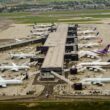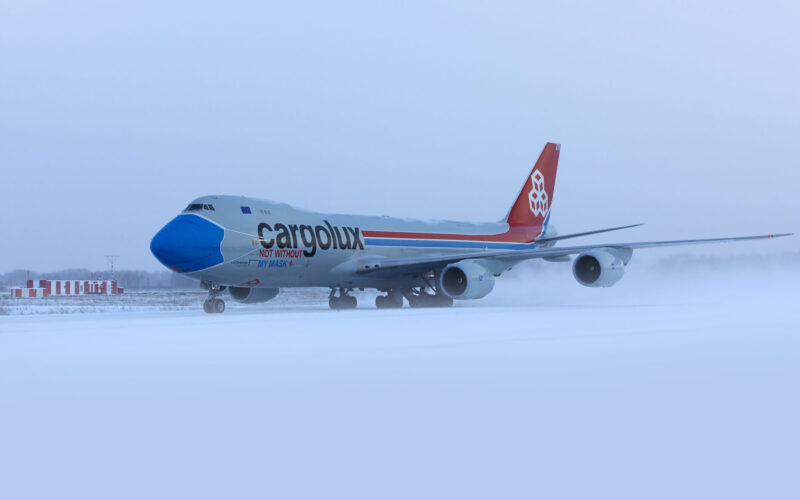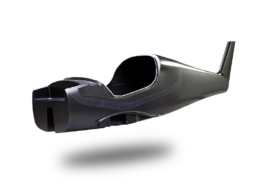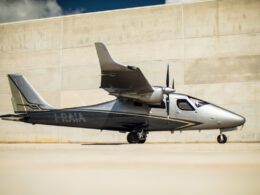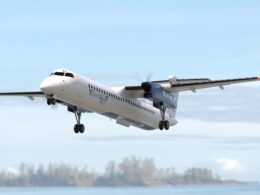There are no two ways about it: the freight industry lacks air capacity to transfer products across the globe. It lacked even before the question of vaccines came about, and with the monumental task ahead of transporting COVID-19 vaccines, the problem is even more glaring.
“Just providing a single dose to 7.8 billion people would fill 8,000 747 cargo aircraft,” summarized the International Air Transportation Association (IATA) in September 2020. The world does not have 8,000 Boeing 747 aircraft – in fact, so far, Boeing has built 1,562 airframes of the Queen of the Skies. Many of them were already scrapped, and the number is only set to dwindle. The production of the 747 will end in 2022, following the last deliveries to UPS and many airlines that have operated older Queens have permanently retired them throughout the year.
But can’t just Boeing produce more 747s to cater to the demand? Long story short, no. But hey, there is a longer answer here.
Roots of the Boeing 747-8F
The latest version of the Boeing 747, the -8, entered service with the cargo operator Cargolux in October 2011. The world, since the initial announcement in 2005, its first commercial flight, and 2020, has changed significantly.
The 747-8 was launched on the backbone of freight – the two initial customers that lined up for the aircraft was the aforementioned Cargolux and Nippon Cargo, a subsidiary of All Nippon Airways (ANA). The launch orders were not breath-taking, to say the least. Boeing launched the program with only 34 orders, hoping it would persuade more airlines to join in on the royal flight deck. Persuaded airlines were not, as customers ordered a total of 191 Boeing 747-8 aircraft throughout the years, without including canceled orders. In total, the manufacturer is set to produce 153 Queen of the Skies, out of which, 106 will be dedicated freighters.
Compared to its predecessor 747-400, the 747-8 had a lackluster career. Boeing delivered 696 various versions of the Boeing 747-400, 227 of which were Freighter or Combi (which was able to carry passenger and freight at the same time) wide-bodies.
For Boeing, that was not as painful as it was for Airbus, which failed to amass a significant amount of orders for its very large plane, the A380. After all, the basis for the 747-8 was its predecessor and Boeing used technologies from the 787 to not only make the aircraft better but to also save on costs. The time to launch it in 2005 seemed perfect – its rival, the A380 was struggling with production delays.
Crisis to shake things up
While the 747-8 was not a clean-sheet design, it still had to be upgraded to be up to scratch to other modern jetliners. After all, it had one major flaw – four engines, falling short to aircraft such as the A330, 767, 777, and 787, which all have had successful careers as freighters.
Nevertheless, Boeing overstimated its own capabilities. In October 2009, Boeing took out a $1 billion charge as part of its Q3 2009 financial results. The company cited “increased production costs and the difficult market conditions affecting its 747-8 program.” The global economic crisis in 2008 shook things up. In 2004, Freight Ton Kilometers (FTK), indicating demand, and Available Ton Kilometers (ATK), measuring capacity, grew by 13.4% and 12.1% respectively, per IATA data, the same could not be said later down the line.
“Air freight has been disappointingly weak in the past two years, 2006 and 2007, in spite of booming world economic growth and trade,” concluded IATA’s 2008 annual report. A year later, the outlook was even bleaker, as the financial crisis struck the world’s economy. The association highlighted that beginning with Q2 2008, freight volumes began to decline and fell by a whopping 22% compared to the same month a year prior in December 2009.
“The scale of this decline is unlike anything experienced before by the industry and reflects the unprecedented global drop-off in manufacturing production and goods trading at the end of 2008,” concluded IATA. Asia-Pacific, which held a 45% market share of international cargo flights, suffered hard. For Boeing, and subsequently the 747-8, largely based on the freight market, that spelled trouble. Out of the 227 various freighter variants of the Boeing 747-400, 121 were delivered to airlines in Asia-Pacific, excluding the Middle East. The financial headwinds could have resulted in the fact that Asia-Pacific airlines were less giddy to order the 747-8F: out of the total 94 freighter variants of the newest Queen, 34 were delivered to the continent. With 12 more 747-8F aircraft to be produced, the total potential market share of Asia-Pacific will be 32%, much less than that of the 747-400.
Expensive venture
The market never truly recovered. Despite Boeing’s own projections that it eventually would, including the demand for very large freighters, 2020 was the final nail in the coffin for the 747s production run.
In April 2013, the first production rate came, as the manufacturer announced it would now assemble 1.75 aircraft per month, instead of two per month. Production rate continued to drop and the first hints at the answer why can’t Boeing just produce more 747s appeared on the horizon in September 2015: its suppliers began to pull out of the program. That month, Triumph, a major supplier for the Boeing 747, exited the program due to another production rate cut. While Boeing took over the manufacturing of fuselage panels, it sought out a new supplier for other work that Triumph had carried out at the time. In Q3 FY2015, the supplier took out a $152 million charge due to “changes in future estimated production rates, labor and overhead costs, pension income and expedited delivery charges.”
In January 2016, the manufacturer cut the production rate once again, to the current rate of half an aircraft per month. Boeing recognized a charge of $569 million due to the cut, piling on top of the $1 billion charge in 2009. Much like Triumph in 2015, suppliers adjusted accordingly. Boeing lost about $40 million per one delivery of the Boeing 747-8, according to a Jefferies analyst Sheila Kahyaoglu, as quoted by Bloomberg. All in all, the manufacturer recorded $4.2 billion of charges related to the program, which was unsuccessful, to say the least.
Thus, winding up production would not be immediate, solving the current capacity crunch that the air cargo sector is facing. Getting suppliers to ramp-up production and training new employees to facilitate the growth of production would prove a time-consuming venture, with questionable benefits at the end of the day. After all, if cargo operators would have seen an opportunity to expand their freighter fleet, they would have done so. Instead, throughout 2020, Boeing has logged orders for 15 dedicated freighter aircraft, including UPS taking over a 747-8F order from Volga-Dnepr. A year prior, that number stood at 28.


